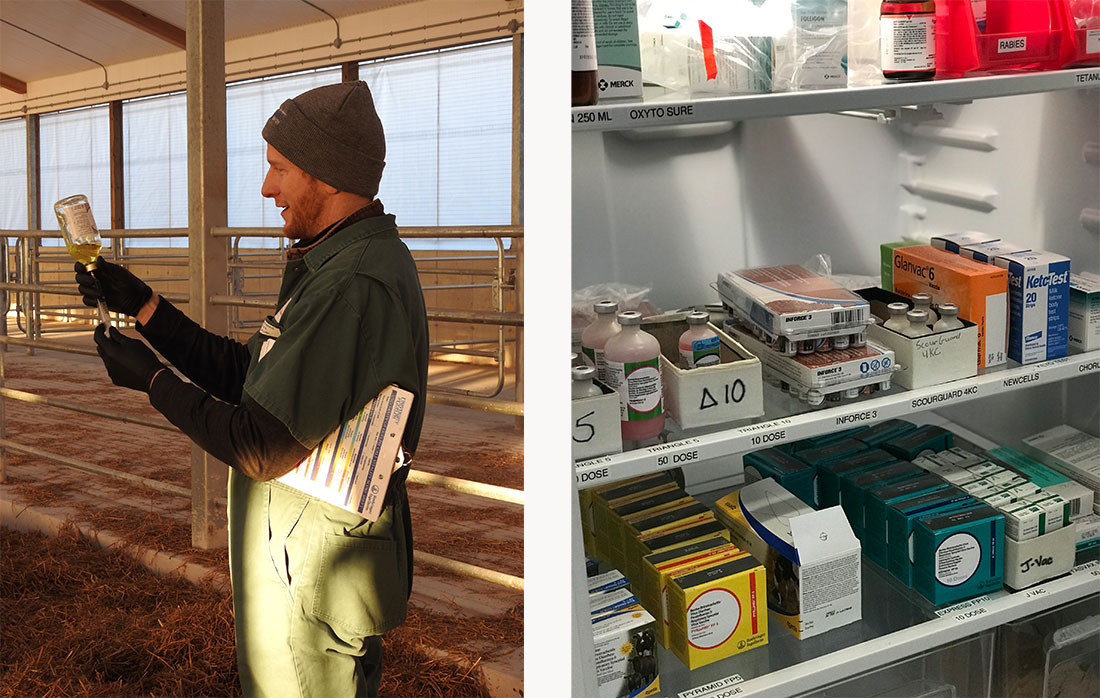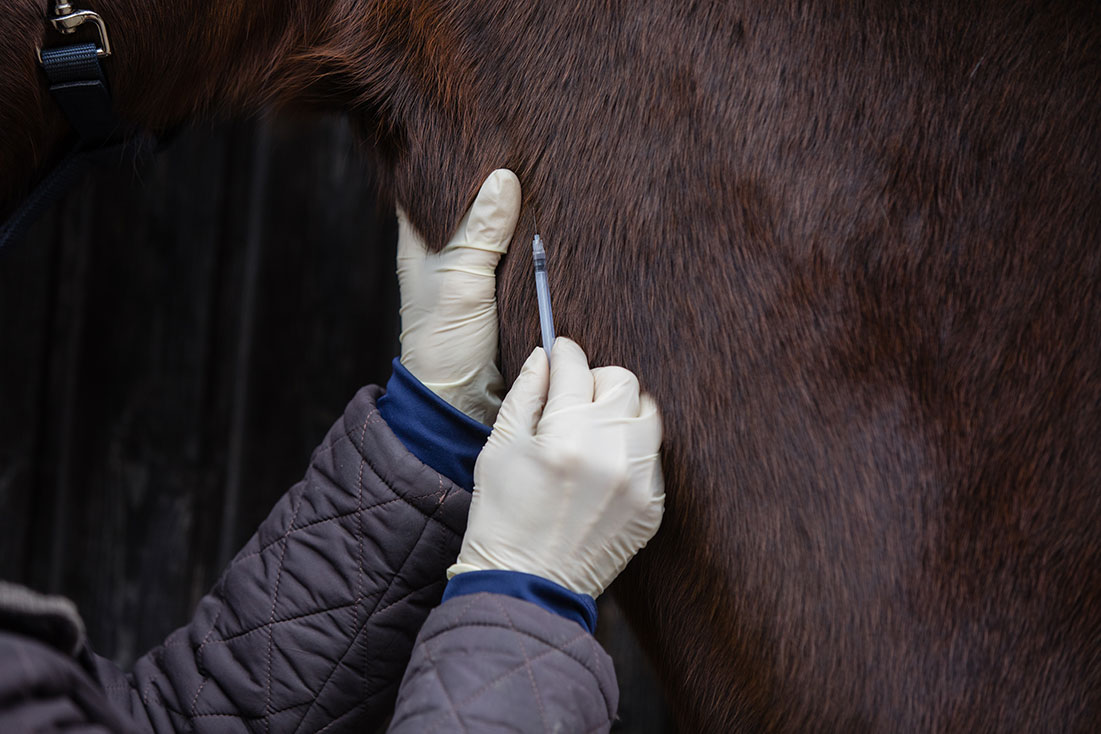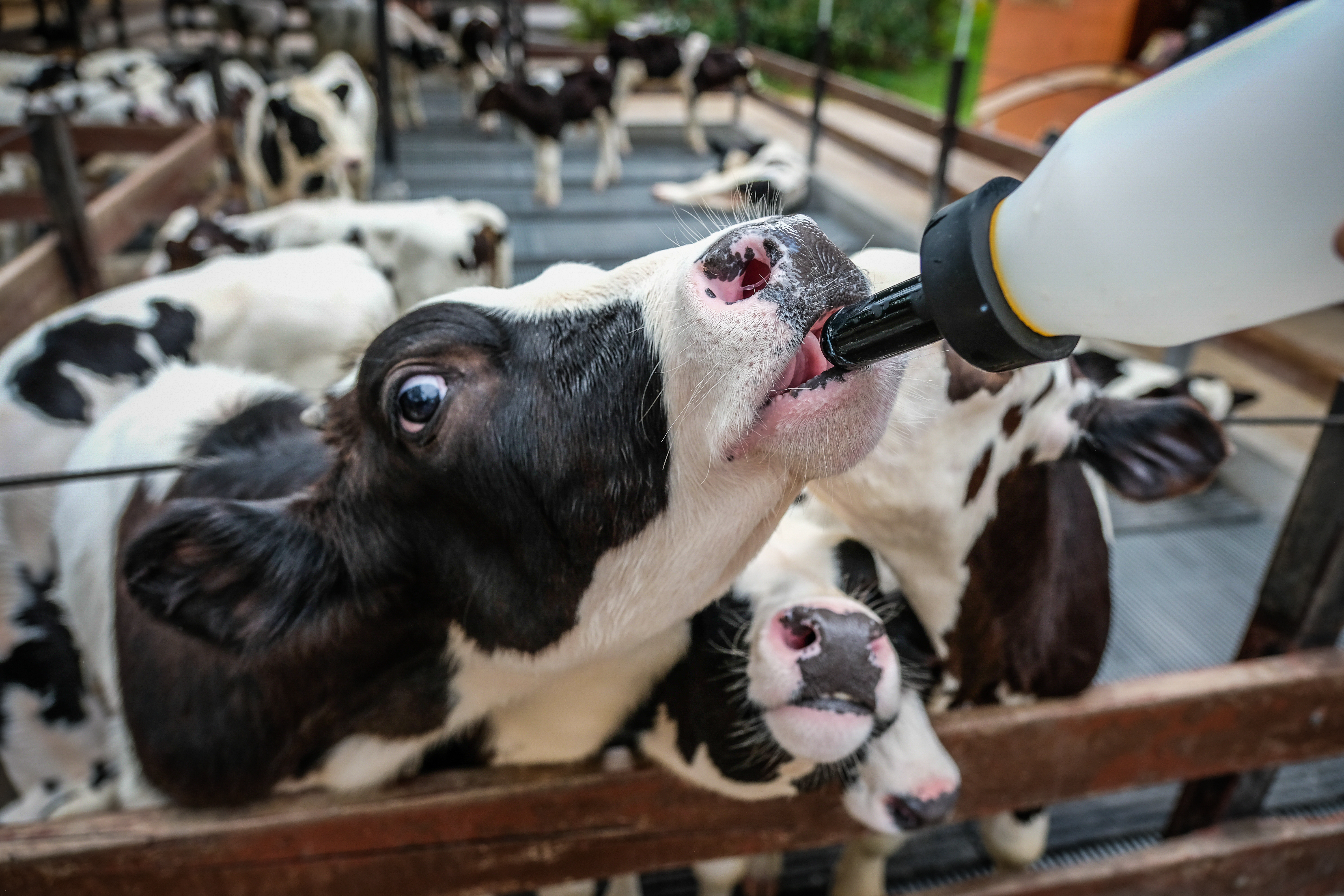Section 5 | Replacement
Page 10 /
Vaccination as a Key Animal Health Tool
Replacement
The goal of replacement is to discover areas where antimicrobial use can be substituted with other classes of products that can prevent or treat disease. There are several product areas that could partially replace the use of antimicrobials on your farm.
Vaccination
The Immune System
The animal’s immune system is designed to recognize and eliminate substances that are not supposed to be in the body (e.g. bacteria, viruses, parasites). It does this through the action of specialized cells and antibodies.
The first time an animal’s immune system identifies a pathogen, it can take a while (7-10 days) to respond and eliminate the infection. This is called the primary immune response. If the animal survives the infection, immune cells remain that are able to “remember” that pathogen. If the animal comes in contact with that pathogen again, these “memory” cells quickly jump to action and the pathogen is eliminated, perhaps before it is able to cause disease in the animal. This secondary immune response is both quicker and stronger than the primary immune response. These animals are said to be immune to the disease. The problem with relying on this model to protect an animal from infection is that the initial infection might cause the death of the animal.
What is a Vaccine?
Vaccines harness the immune system’s ability to “remember” previous infections without being naturally infected by the disease-causing pathogen. We are trying to make sure that when the animal’s immune system sees the disease-causing bacteria, virus, or parasite, it will mount a strong secondary immune response, therefore preventing illness. There are a wide variety of vaccines available in most domestic livestock species to prevent infectious disease.

Source: ACER Consulting Ltd.
Types of Vaccines
Vaccines come in many types, depending on the disease they are trying to prevent.
Killed vaccines
- The bacteria or viruses in these vaccine products have been killed with chemicals so that they are no longer able to divide and cause disease
- These products normally contain compounds called “adjuvants”. Adjuvants are chemicals that improve an animal’s immune response
- Examples are oil or aluminum hydroxide
- They can normally be quite irritating to tissues and may persist for some time following administration
- Examples are oil or aluminum hydroxide
- Most killed vaccines need to be given twice (primary and booster) to stimulate effective immunity

Modified-live virus vaccines
- These vaccine products are made from viruses that have lost their ability to cause disease but STILL are able to produce a protective immune response against disease-causing viruses
- Following administration, these viruses multiply within the animal and induce a strong and lasting immune response
- Many products require only a single dose for protective immunity, while others require one or more boosters
- Care must be taken when handling these vaccines (e.g. refrigeration), as if the viruses are accidentally killed, the vaccine will not work
Bacterins
- A vaccine made from a suspension of whole bacteria (either live or killed) is a bacterin
Toxoids
- Some bacteria are harmless themselves, but they produce toxins that cause serious disease
- Toxoids are vaccines made from inactivated bacterial toxins
- Examples of this include vaccines that protect against tetanus
Administering Vaccines
There are many different ways to administer vaccines to animals. Factors such as the species of animal, disease targeted, practicality of administration, desired immune response, and vaccine characteristics all affect the mode of delivery of each vaccine. Vaccine manufacturers and government regulators have thoroughly evaluated the performance of vaccines, determining the most effective route and dosing regimen required to stimulate immunity. As such, it is vitally important to follow label directions and discuss administration and any concerns with your veterinarian when administering vaccines to your animals. The following are common modes of administration for commercial vaccines in Canada:

- Intramuscular injections
- Subcutaneous injections
- Intranasal administration
- Oral administration
- Drinking water
- Specific vaccines in swine and poultry
- Methods specific to poultry:
- In ovo (egg injections)
- Feed
- Aerosol spray
- Intraocular (eye)
- Beak administration
- Wing web

Important Points to Consider
Vaccination, while reinforcing immunity, is not a guarantee of disease protection.
Vaccination will increase an animal’s resistance to disease, and can reduce sickness and reliance on antimicrobials. Good husbandry practices should accompany vaccination to ensure maximal benefits
Vaccines are designed to prevent, not treat, disease. Therefore, you should focus on giving vaccines at the right time, considering:
Health status of the animal
- Vaccination works best when given to healthy animals BEFORE they are exposed to disease
- Other stressors (other infections, overcrowding, nutrition deficiencies, etc.) can interfere with the immune response
Age
- Younger animals tend to respond poorly to vaccines because of lasting immunity that they have received from their dams (e.g. through the placenta or with colostrum)
- Follow the advice of your veterinarian when determining the optimal age at vaccination
Timing
- You should be strategic with when you vaccinate your animals to maximize their immune response
- Examples include:
- Giving primary and secondary doses of a vaccine prior to an expected disease exposure (e.g. when bringing in animals from another herd)
- Giving vaccines to prevent reproductive problems prior to breeding periods
- Giving vaccines to pregnant animals 6-8 weeks prior to giving birth in order to maximize the antibodies present in colostrum
- Examples include:
- Vaccinating in the face of a disease outbreak:
- There is little scientific evidence that this vaccination strategy is effective at limiting disease
- Animals that appear healthy when vaccinated might actually be in the beginning stages of disease and become ill regardless of vaccination
- The decision to vaccinate in the face of an outbreak must be made in consultation with your veterinarian
